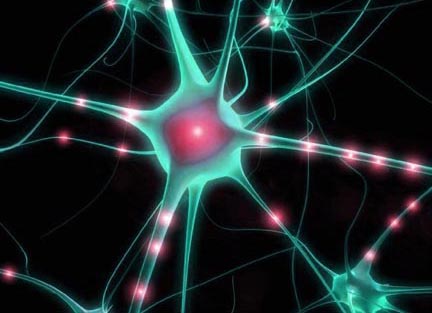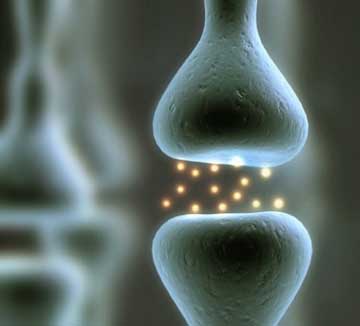
All seriousness aside, the brain is a phenomenal organ, with abilities above and beyond what we know about even today. Scientists seem to agree that there are, at least, a few complete systems at work which we know nothing about yet.
Without further brain-effort, let me regale you with some facts we do know about. I'm sure each and every one of them will cause some part of your grey matter to light up.
Enjoy!
 A thin piece of brain tissue 3 mm in diameter could have around a billion connections between neurons. There are about the same number of neurons in each baby's brain....as days since the Earth was formed over 4 billion years ago.
A thin piece of brain tissue 3 mm in diameter could have around a billion connections between neurons. There are about the same number of neurons in each baby's brain....as days since the Earth was formed over 4 billion years ago.Some neurons are the longest cells in the human body, reaching up to 1 metre along the spinal cord.
When compared to body size, humans have one of the largest brains in the animal kingdom. Our brains are around 2.3% of our body weight whereas an elephant's is only 0.2% of its body weight. Our brains are also very active compared to other animals'. Human brains consume more than 20% of our total oxygen consumption. The brains of most other vertebrates only use an average of between 2-8% of total oxygen.
 Neurons can send signals of speeds of up to 350 km/h.
Neurons can send signals of speeds of up to 350 km/h.
Some neurons can send 500 electrical impulses a second.
The idea of millions of neurons dying might seem a shame, but recent research has shown that these deaths are actually a good thing. Not only is it that the number of connections are more important than the number of neurons, but failure of unnecessary neurons to die when they should, has been linked to various intellectual disorders. Currently, scientists believe the brain is programmed to produce far more neurons than it needs. This is thought to be just in case things go wrong while these neurons are migrating to where they belong and then, while they start networking with other neurons. Once it becomes clear which neurons are not going to be needed, they simply switch off and die.
 At birth, the human brain is only the size of a chimpanzee's but it grows rapidly as connections form between neurons. In the first 4 years of life a human brain increases is size by 400%.
At birth, the human brain is only the size of a chimpanzee's but it grows rapidly as connections form between neurons. In the first 4 years of life a human brain increases is size by 400%.
Four months before birth, the human brain has twice as many brain cells as a 2 year old. The extras are made as backup neurons and those which are not used die and are reabsorbed by the body.
It has been estimated that if you counted the connections between the neurons in the outer cortex alone (at the rate of one connection per second) it would take you 32 million years.
 Several recent studies from all over the world clearly show that the human brain, like many of our organs, operates on a use-it-or-lose-it principle. The more active your brain is, the more active it can be. Even more important has been the research showing that active brains which learn new things are often linked to longer, healthier lives – yet another reason for reading a good book or signing up for a course in something you've never tried before.
Several recent studies from all over the world clearly show that the human brain, like many of our organs, operates on a use-it-or-lose-it principle. The more active your brain is, the more active it can be. Even more important has been the research showing that active brains which learn new things are often linked to longer, healthier lives – yet another reason for reading a good book or signing up for a course in something you've never tried before.
 Thumbs are so important to humans that more of our brain is devoted to signals from thumbs than to all the signals from our chest and back.
Thumbs are so important to humans that more of our brain is devoted to signals from thumbs than to all the signals from our chest and back.
 Once a human reaches the age of 35, he/she will start losing approximately 7,000 brain cells a day. The cells will never be replaced.
Once a human reaches the age of 35, he/she will start losing approximately 7,000 brain cells a day. The cells will never be replaced.